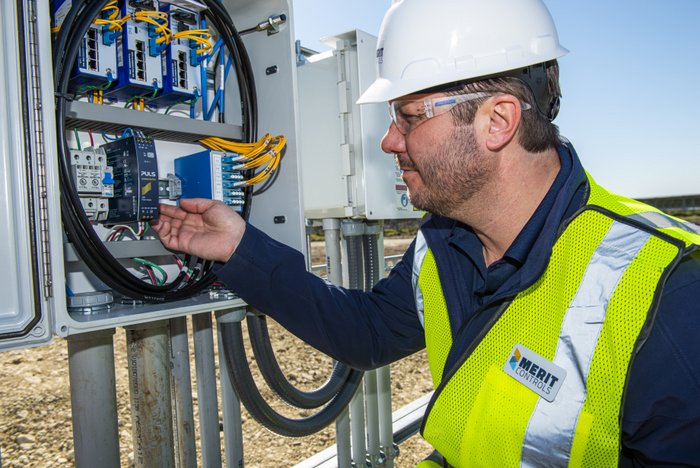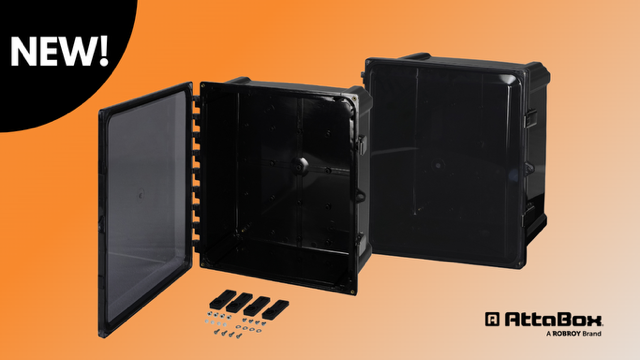End-of-life is near for renewable power plant controls

It’s hard to believe that it’s been a decade since the solar construction boom of 2010. With renewable energy flourishing nationally and abroad, industry progress has been nothing short of astonishing. In the United States alone, solar has experienced an average annual growth rate of 49% since 2010. Indeed, solar, wind and energy storage have all experienced a tremendous uptick in adoption; coupled with a surge in microgrids, and a decline in central station power generation, it has been a transformative ten years.
It’s also been a hard-working 10 years. Many solar PV plants are approaching a decade of electrification and are showing their age. Electronic controls don’t last forever; servers and inverters may experience failures after five years. When control systems break, it’s an operational nightmare. This is due to their role as the ‘brains’ or what we refer to as the “conductor” of distributed energy resources (DERs) and to a certain extent, the grid.
The sheer number of renewable assets, integration with other energy sources and connection to the grid can present challenges in the best case scenarios. When you combine that with electronic components that are reaching end-of-life status, it’s time to get serious about lifecycle management: retrofit or a rip-and-replace. Besides the obvious pain point of control systems that just don’t work, there are several other compelling reasons why a retrofit or a rip-and-replace should be considered:
Compliance with evolving grid requirements
Often times, plant owners want to modernize their equipment, or change how the operations of the plant are handled. In more dire cases, however, the plant is simply not operating within the requirements of the grid. Avoiding over-production spikes, for instance, is a key factor for plant owners seeking a new system. Why? Enter the overage charge. This is the levy placed on utility-scale solar plants that experience energy production higher than the agreed-upon MW. During partly cloudy days, for instance, the plant may experience several of these spikes. To remedy this, owners are setting their power set point just below the max power. This can cost anywhere from 4-5 MWh per day. Multiply that by 100 power plants. That’s a lot of lost revenue!
Legislation changes to the electricity market
Historically the stronghold of large power plants, the rules that govern the regional wholesale electricity market changed abruptly in September 2020. The Federal Energy Regulatory Commission (FERC) issued Order 2222, which essentially kicked down the barriers that DER aggregators had contended with previously. FERC 2222 maintains the previous orders that allowed DERs to compete and extends them to aggregate resources — opening the competitive wholesale electric markets to small providers, bundled technologies with energy storage, on-site renewables, generators, and other microgrid technologies. The complexity of even more vendors, seamlessly connecting DERs and other energy sources, not to mention grid requirements, means the core power control systems must be operating at full tilt.
Cybersecurity concerns
National security, especially with regard to our nation’s infrastructure, commands headlines every day. Our electric infrastructure is particularly vulnerable. Grid security is challenged by the proliferation of energy resources, the variability of renewables, shifting supply and demand, the integration of energy storage, nuclear energy, natural gas, and coal. Even extreme weather events can increase risks. Of course, retrofitting existing equipment is the ideal way to maximize IoT value, but old technologies and applications can lead to a rise in potential security risks within a plant’s network.
Clearly, the power plants that run our energy networks need a structured and tailored approach, and there is promising momentum to create just that. In late November of 2020, the U.S. Department of Energy (DOE) announced the creation of the Grid Resilience for National Security (GRNS) subcommittee as part of the Electricity Advisory Committee (EAC). The GRNS main focus is to “provide guidance on anticipating intensifying threats and developing new approaches to risk management and threat mitigation.”
There are many compelling reasons to replace older systems. When undertaking a retrofit or rip-and-replace, it is important to select a vendor that has the right experience, solutions and expertise. That’s exactly what NovaSource (formerly First Solar’s North American Operations and Maintenance) did when they sought out a qualified partner to deliver a renewables power controls solution for their customer, Occidental.
An end-of-life case study: NovaSource and Occidental
Headquartered in Houston, Occidental is an international oil and gas exploration and production enterprise; it is one of the largest U.S. oil and gas companies, based on equity market capitalization. The company’s wholly owned subsidiary, Oxy Low Carbon Ventures, LLC (OLCV) was formed to economically grow Occidental’s businesses while reducing emissions.
Occidental contacted First Solar (now NovaSource Power Services) seeking a new power controls solution for its 16-MW Goldsmith field facility near Odessa, Texas. The 120-acre Goldsmith plant made history in 2019 as the first large-scale solar facility of its kind to directly power oil and gas operations in Texas. However, the outdated controls system, installed by ALSOEnergy, was simply not “smart” enough to serve their needs. As power plant controls are essentially the “brains” of renewable energy systems, this put Occidental at risk. They needed reliable voltage control to ensure compliancy within the Electric Reliability Council of Texas (ERCOT) territory. In addition, the incumbent was not sophisticated enough to allow Occidental to export excess power from its behind-the-meter, self-powering solar installation.
NovaSource selected Merit Controls to install Merit Controls’ renewables power plant controls solution at Occidental’s Goldsmith facility. Merit’s solution enabled Occidental to improve their business case, while ensuring sustainability and compliance. Following the install, through the company’s OLCV subsidiary, Occidental was able to secure a long-term power purchase agreement for 109 MW of solar energy, beginning this year.
Conclusion
As we look back over the last decade, the proliferation of solar energy and its widespread application in a variety of vertical industries has been truly remarkable. While celebrating the growth of zero-carbon energy sources, we also must stay attuned to the passage of time and the importance of lifecycle management, particularly for those ‘working parts’ that are nearing end-of-life. Certainly, there are many complexities that are inherent to integrating DERs into the nation’s power portfolio. Renewables power plant controls are quite complex. However, forward-looking enterprises can circumvent the pain points that are caused by outdated legacy systems well before they become operational hazards. Like Occidental, those that take a proactive stance and seek out a robust, proven solution will remain compliant, experience ROI via additional revenue opportunities, and benefit from seamless operations for years to come.
Nick Milam serves as the Director of Operational Technology for Merit Controls. He leverages his vast experience with SCADA and power plant control systems to lead Merit’s engineering and execution teams. Nick has an extensive electrical engineering, control system architecture, and utility-scale renewables background — spanning more than 16 years. Previously, he held management positions at Clearway Energy Group and First Solar.





Comments are closed here.